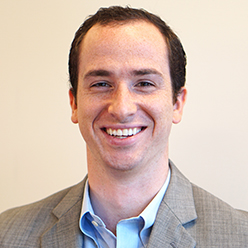Since the relaunch of our Blended Learning Universe (BLU) school directory six months ago, we have received several requests from school districts wanting to create district-level profiles—previously, only schools could create profiles. This week, we are excited to announce the release of district profiles on the BLU. Districts can now share their high-level, blended-learning initiatives and results, as well as link to blended schools within their organizations so that users can see all the blended-learning activity across a district. This new feature will allow district administrators to connect and collaborate with innovative organizations across the globe, as well as provide teachers, parents, researchers, and others with important insights into how districts are managing the transition to blended learning at scale. Click here to create a district profile.
It has been nearly a decade since Clayton Christensen and Michael Horn predicted that by 2019 half of all high school courses would be online in some form or fashion. This prediction was built on the theory of disruptive innovation, which posited that early online-learning programs that got their start outside of mainstream classrooms—such as alternative schools or credit-recovery programs—would improve over time and get incorporated into mainstream courses.
The process of improvement that has sparked disruptive growth is twofold. First, the technology itself has improved. Learning software is becoming more adaptive, engaging, and effective; and hardware reliability has improved even as device costs have come down. Second, as educators witness the opportunities and benefits that online learning offers students who are struggling to succeed in the traditional education system, they can learn best practices for blending online learning into mainstream classrooms.
After seeing positive results from early online-learning programs that started outside of mainstream classes, two districts—Putnam County School System in Cookeville, Tenn., and Western Wayne Schools in Pershing, Ind.—are using blended learning to disrupt the traditional classroom. Both are small, rural districts that first dipped their toes in the blended-learning space by offering online credit- or dropout-recovery programs to help students who were not succeeding in mainstream courses. Below is a brief description of how these districts are making this transition.
Putnam County School System
Putnam County School System began its journey with online learning in 2008 by developing the Virtual Instruction to Accentuate Learning (VITAL) program, which at the time was a small online credit-recovery program. It has since expanded the VITAL program to serve all students in the district. The expanded program not only provides all students with an online option to recover credits, but also allows all teachers to assign online modules to struggling students before credit recovery even becomes an issue. As the VITAL program has improved and expanded over time, it has helped the district’s graduation rate to increase from 86 percent to 92.6 percent between 2008 and 2014. Sparked by these promising results from implementing an A La Carte program, Putnam County School System has initiated more blended-learning efforts across the district, including Station Rotation and Flipped Classroom programs.
In describing the evolution of blended learning in Putnam County School System, Sam Brooks, the district’s personal learning coordinator, said:
Our current uses of online learning in the classroom came from the successes of the VITAL program. Ultimately, I think VITAL made everyone aware in Putnam County that blended and personalized learning is the way to meet our students where they are. These learning environments place the student at the center and give our teachers the ability to become a facilitator of learning, rather than a “stand and deliver” teacher that lectures all day. This culture shift is the founding principle that motivates us to help each of our students fulfill their potential.
Putnam County School System’s transformation is by no means complete—like any disruptive endeavor, rethinking instructional practices takes time. But by seeding ground in an area outside of the mainstream classroom, the district has identified pathways to student-centered learning that will likely accelerate this progress moving forward.
Western Wayne Schools
In 2014, Western Wayne Schools created an alternative blended-learning program to support high school students who were failing courses and in danger of dropping out. Although the district’s students had around a 90 percent passing rate on state exams in elementary and middle school, high school teachers continually complained that students were entering high school academically unprepared—and that many were in danger of failing. The alternative program began as a school-within-a-school model, where students could enroll in the online program to recover credits while also enrolling in traditional courses. Because the credit-recovery options were administered online, students could complete courses at any time, whereas in the traditional model they were stuck re-enrolling in and completing courses according to a semester schedule.
Recognizing that this flexibility in pacing could be beneficial to all students, the district has recently expanded the program to offer online courses as an option for all high school students. Students who choose to enroll in an online course work in a flexible classroom environment with a teacher during the school day. These flexible learning environments often look more like 1:1 tutoring sessions or group study sessions than traditional classrooms.
In describing the changes the district has made to support these blended efforts, George Philhower, the assistant superintendent of Western Wayne Schools, said:
We have made adjustments to how we look at traditional school timelines (grading periods, semesters, class periods, grade levels) and have begun to shift to a system that guarantees learning instead of seat time. Instead of receiving credits at the end of the semester, students at our high school are earning credits based on when they complete their coursework. In the traditional system students that failed a class had to repeat it the following semester, sometimes the following school year. They would often fall into a “failure trap,” where it soon becomes impossible to pass while juggling other course loads. Now that failure isn’t an option, students have the flexibility to complete coursework in whatever way works best for them.
By targeting nonconsumers, or students outside of the mainstream who were in need of learning opportunities that traditional classes couldn’t provide, both Putnam County School System and Western Wayne Schools created opportunities for district leaders to learn from the successes and failures of their blended-learning programs in small-scale settings before implementing the programs in mainstream classrooms. This disruptive implementation of blended learning is critical for any school or district attempting to rethink instruction at scale.
To share your district’s blended-learning journey, click here.
For more, see:


